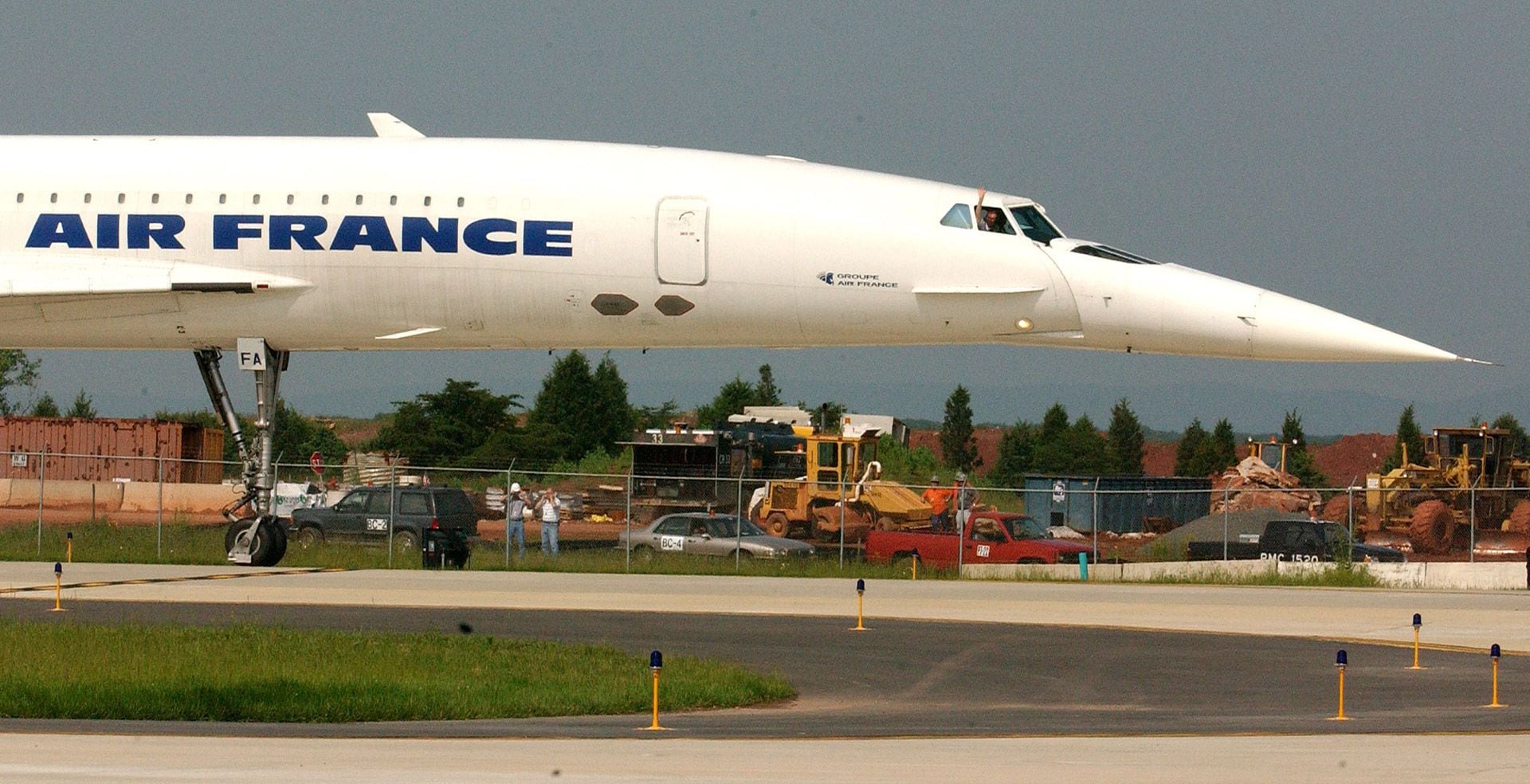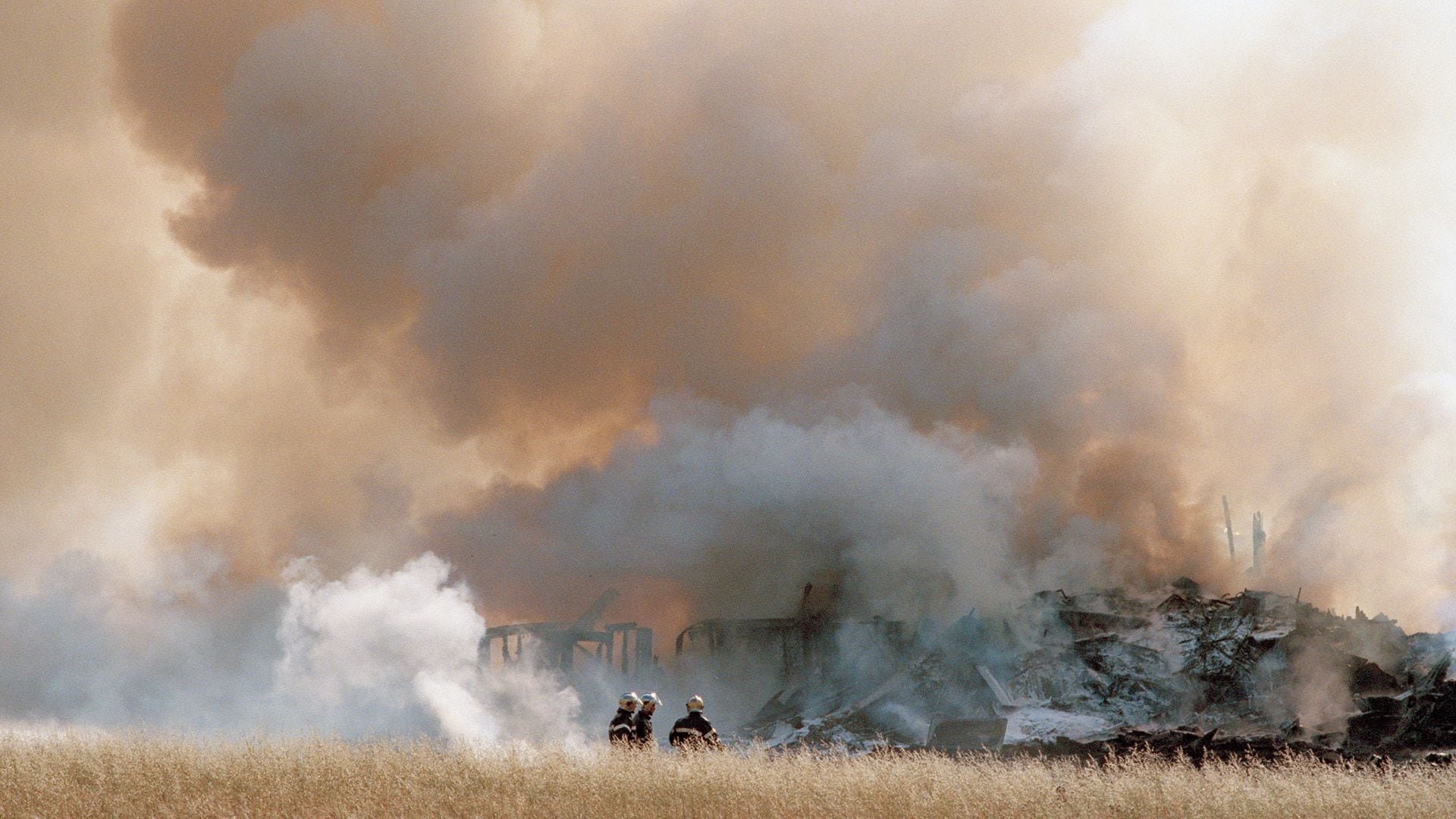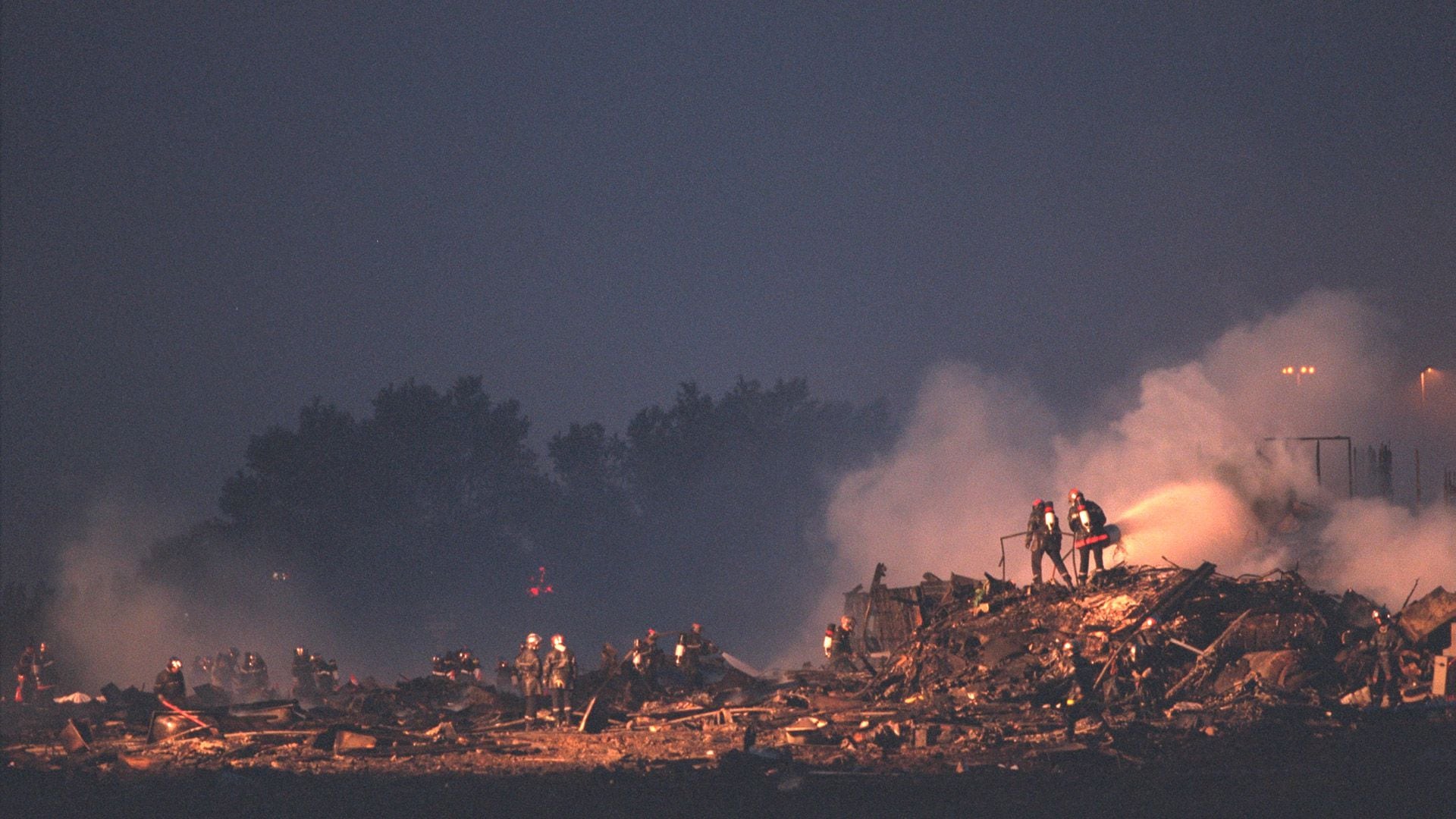
Charles De Gaulle International Airport, Paris, Tuesday, July 25, 2000. Time: 16. 44:55. Air France Flight 4590 to New York has already been ordered to take off and Concorde travels along the main runway at more than 300 kilometers per hour to take flight. Suddenly, a desperate cry from the control tower operator rumbles in the cabin of the plane: “Stop takeoff! There's fire in one of the engines! ”. “Malfunction in engine number 2 -the voice of driver Christian Marty sounds calm. The fire is spreading. It's too late to slow down. We will go up and turn to Le Bourget for emergency landing.”
The Concorde takes flight, followed by a long trail of fire coming out of its left flank. The pilot turns it around with a maneuver that looks like a pirouette, but there is nothing left to do: the plane falls on a cornfield five kilometers from the runway, a few meters from a hotel and explodes.
The clock struck 16.47, everything had happened in just over two minutes. After 31 years of undefeated sailing the skies of the world, a Concorde plane was in an accident. There were 100 passengers and 9 crew members travelling on board. Many hours later - and after some confusion - it was established that five other people had died in the hotel on fire. When the plane fell, with its tanks full of fuel, it exploded and disintegrated into thousands of pieces. One of the burned parts flew to a hotel of the Hotelissimo chain, with 45 rooms, built entirely of wood. The flames spread quickly and left five guests without escape.
The total toll was 114 victims. Soon there would be one more victim: the Concordes survived less than two years of the accident, almost no one wanted to fly in them anymore.
The King of Heaven
Used on passenger flights since 1969, the Concorde supersonic aircraft was considered the king of the skies. While subsonic commercial aircraft took about eight hours to complete a trip between Paris and New York, the Concorde only needed about three hours and thirty minutes. Its maximum altitude was 18,300 metres and its cruising speed was 2,410 kilometres per hour, more than twice the average speed of conventional aircraft.
It was a luxury plane, with a capacity for one hundred passengers, which could only be used by those who paid out the $9,000 that the ticket cost. Of course, its quiet gait, the champagne-free tap on board, the caviar bites and the catering prepared by the most famous French chefs made passengers who settled in their four-seat rows (against seven of the Boeing) forget the price.
Another advantage was the time, taking less than half the hours that other planes needed to make the same journey. The dream of doubling the speed of sound had been fulfilled in 1979, when the aircraft reached a speed of 2,500 kilometers per hour for 53 minutes on a regular flight.
It was also a plane rated as “the safest in the world”. With the exception of a flat tire landing in 1979 in New York, without any consequences, until July 25, 2000 the Concordes held a record that no other aircraft model could exhibit: more than three decades of accident-free flights.

Rumors and unanswered questions
From the very moment that the single source of fire was extinguished, the firefighters left operations under the responsibility of a group of aeronautical experts, who traced the parts of the wreckage necessary for the accident. “Pay attention to see if you find any birds,” was one of the orders they gave. They did not rule out that some bird had entered the engine and caused the failure.
At midnight they found the black boxes, which were immediately taken to Paris. The official investigation, with the cover of “manslaughter”, was carried out by the Prosecutor's Office of the Court of Great Instance of Pontoise, which immediately ordered the suspension of all Concorde flights in France.
Meanwhile, Air France's director of communications, François Bouzet, was trying to put out another fire. One of the first information that journalists managed to obtain was that the flight had taken off 66 minutes late due to “technical problems”. That could be the key to the accident.
At the press conference that Bouzet gave at the same Charles De Gaulle Airport, a chronicler insisted that he explain what technical problems were involved.
“Driver Christian Marty and co-driver Jean Marcot exercised their right to demand a technical check before leaving,” Bouzet replied.
- What came out of that check? - asked the chronicler.
-Commander Marty insisted that a part of the aircraft's No. 2 engine be replaced...
- Could you identify the piece? - the journalist interrupted him.
-The rear thrust (reverse drive) - said Bouzet and waited for the question that he could not avoid.
- Wasn't it engine number 2 that caught fire?
The Air France Communications Director sighed and rehearsed the only possible answer:
“Yes, but it is absolutely impossible at this time to attribute to that repair the origin of the accident. I pray that you will not be carried away by unfounded rumors.

A sea of versions
François Bouzet's request was useless. If anything abounded 24 hours after the tragedy, it was rumors. One of them was very suggestive: if there was a failure in any of the engines, an alarm should have sounded the moment the take-off tasks began, which would have allowed the pilot to abort it. If the alarm had not sounded, it was clear that the security systems had failed.
It was one of the lines of research that the experts were following. “The driver realized that there was a malfunction in engine number 2, but he was no longer in a position to brake the device due to speed,” said the spokeswoman for the Prosecutor's Office, Elizabeth Senot.
André Turcat, the pilot who made the first experimental flight of a Concorde in 1969, threw more fuel into the fire, if that was possible. The experienced commander believed that the cause was much more serious than an engine failure. “If so, the crew would have been able to see it when the plane was going at a speed of 300 kilometers per hour. At that point it is still possible to brake the plane. It is something well proven, certified and for which all Concorde riders have been trained. So it had to be something much more serious,” he said.
With the Snecma Olympus engine in the sights of the world, its manufacturer, Rolls Royce, too, had to come out to show its face: “In 24 years of exercise and almost a million flight hours, we never experienced the slightest problem”, explained the company's spokesman Steve Fushelberg from London.
The Concorde of the accident was the oldest of the 13 that were in operation. It had been manufactured in 1975 and had 11,989 flight hours. The previous year he had been given a full check-up and four days before the tragedy he had passed his last regulatory control. However, the media wondered if the revolutionary supersonic plane wasn't getting old... and dangerous.

It wasn't Concorde's fault
The suspension of Concorde flights lasted for more than three months, while the investigation into the cause of the crash of flight 4590 lasted.
The result was surprising: what caused the tragedy was an oversight that had nothing to do with the plane, nor with its mechanics, nor with the pilots. The French Air Accident Investigation Office determined, from the contents of the black boxes and the analysis of the wreckage, but mainly by the analysis of video footage from the Airport, that the failure in the plane had been caused by a metallic tape that had come off another aircraft, a Continental DC-10 Airlines that had taken off minutes before Concorde.
That piece of metal that had been left on the runway without anyone seeing it pierced one of Concorde's tires when the plane was already 300 kilometers per hour. The tire exploded and one of the pieces of rubber that came off hit one of the fuel tanks, causing one of the valves on the left wing to burst. This had caused a fuel leak that, when it came into contact with sparks from a wiring affected by the blow, caused a fire in the engine.

A heroic pilot
Recordings of Concorde's black boxes revealed that, thanks to a heroic and desperate action of the plane's pilot, a much worse catastrophe had been averted.
The strange pirouette that Concorde had done in the air before it crashed was due to the fact that Commander Christian Marty had had the lucidity — already certain of crashing and dying — to change the plane's course to prevent it from falling on a populated area, where there was a hospital and several hotels. Had he not done so, the number of victims would have multiplied.
“If it weren't for the pilot, the tragedy could have been much greater: when he saw that he could no longer master the device and that it was going to fall, he avoided the crowding of hotels in Le Bourget and with enormous cold blood he pointed to an open area,” said the spokesman for the investigators when he released the final report on the accident.
The heroic action of pilot Christian Marty led a retired colleague, former Concorde commander Claude Hetru, to add to what the report had stated: “When you fly a Concorde you are not flying a plane, you are piloting a Concorde. It's something special, unique... And your pilots, forgive the lack of modesty, we are too,” he told reporters who asked for his opinion.
Agony and death of a king
On December 6, 2010 - more than a decade after the accident - Continental Airlines and John Taylor, one of its mechanics, were convicted of manslaughter, when they were held responsible for the detachment of the tape that had caused the accident of flight 4590.
It was too late. Concorde planes haven't sailed through the sky for seven years.
On 10 April 2003, Air France and British Airways - the two airlines using the luxury supersonic passenger plane - announced at the same time that they would withdraw Concorde by the end of that year.
The reason they gave was overwhelming: since the accident of 25 July 2000, the number of passengers on Concorde planes had fallen so low that it made it economically unsustainable to take them off.
The king of heaven was dead.
KEEP READING:
Últimas Noticias
Debanhi Escobar: they secured the motel where she was found lifeless in a cistern
Members of the Specialized Prosecutor's Office in Nuevo León secured the Nueva Castilla Motel as part of the investigations into the case

The oldest person in the world died at the age of 119
Kane Tanaka lived in Japan. She was born six months earlier than George Orwell, the same year that the Wright brothers first flew, and Marie Curie became the first woman to win a Nobel Prize

Macabre find in CDMX: they left a body bagged and tied in a taxi
The body was left in the back seats of the car. It was covered with black bags and tied with industrial tape
The eagles of America will face Manchester City in a duel of legends. Here are the details
The top Mexican football champion will play a match with Pep Guardiola's squad in the Lone Star Cup

Why is it good to bring dogs out to know the world when they are puppies
A so-called protection against the spread of diseases threatens the integral development of dogs



